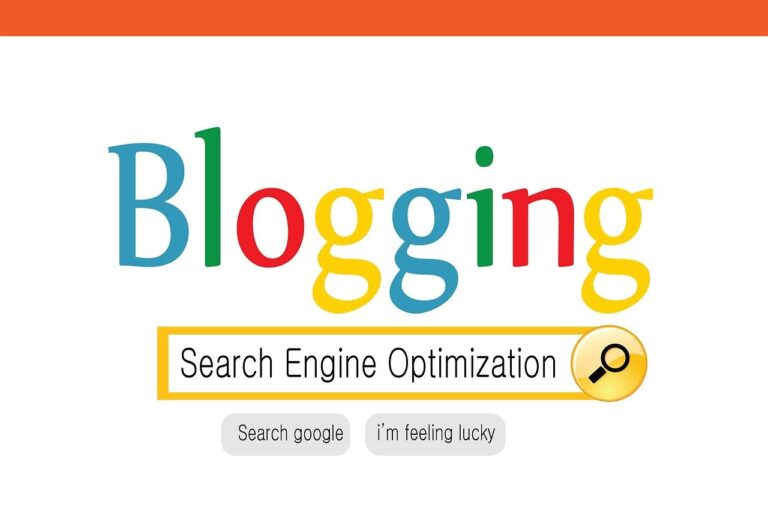Holistic healing approaches have transformed countless lives, offering hope and restoration to those seeking wellness beyond conventional methods. These real-life success stories showcase the profound impact of integrative therapies on physical, emotional, and mental well-being.
By addressing the root causes of health issues and treating the whole person, holistic healing has empowered individuals to overcome chronic conditions, manage stress, and achieve lasting vitality.

Transformative journeys in therapy often begin with self-discovery, leading to enhanced self-awareness and personal growth.
Clients have reported significant improvements in various aspects of their lives, from pain management to emotional resilience. These stories serve as powerful testaments to the effectiveness of holistic healing modalities and the potential for profound change when you embrace a comprehensive approach to health.
As you explore these inspiring accounts, you’ll gain insights into the diverse range of holistic practices that have helped people reclaim their health and happiness.
From acupuncture and herbal medicine to mindfulness techniques and nutritional therapy, these success stories highlight the versatility and effectiveness of integrative healing approaches.
Key Takeaways
- Holistic healing addresses root causes to achieve comprehensive wellness
- Client transformations span physical, emotional, and mental health improvements
- Diverse holistic practices offer personalized paths to healing and vitality
The Power of Holistic Healing
Holistic healing approaches the body, mind, and spirit as interconnected systems. This comprehensive view of health can lead to profound transformations and lasting wellness.
Understanding Holistic Healing
Holistic healing recognizes that your well-being depends on the balance of physical, mental, emotional, and spiritual aspects. This approach considers your entire life experience, including relationships, environment, and lifestyle choices.
Unlike conventional medicine that often treats symptoms in isolation, holistic practices aim to address the root causes of health issues.
Practitioners of holistic healing work with you to develop personalized treatment plans. These plans may incorporate various modalities to support your body’s natural healing abilities and promote overall wellness.
Benefits of Holistic Practices
Holistic healing offers numerous benefits that extend beyond symptom relief. You may experience:
- Reduced stress and anxiety
- Improved sleep quality
- Enhanced immune function
- Better emotional balance
- Increased energy and vitality
Holistic approaches can complement conventional medical treatments, potentially leading to faster recovery times and fewer side effects. By addressing underlying imbalances, you may find long-term solutions to chronic health issues.
Many people report a greater sense of empowerment and connection to their bodies through holistic practices. This heightened awareness can lead to better health choices and a more proactive approach to wellness.
Common Holistic Modalities
Holistic healing encompasses a wide range of practices. Some popular modalities include:
- Acupuncture
- Herbal medicine
- Meditation and mindfulness
- Yoga and tai chi
- Nutritional therapy
- Massage and bodywork
Mind-body techniques like meditation can help you manage stress and improve mental clarity.
Physical practices such as yoga combine movement, breath work, and mindfulness to enhance flexibility and strength while promoting relaxation.
Nutritional therapy focuses on using food as medicine, addressing deficiencies, and supporting your body’s natural healing processes. Herbal remedies and supplements may be used to address specific health concerns or boost overall vitality.
Success Stories in Physical Healing
Physical healing through holistic approaches has led to remarkable transformations for many individuals. These stories highlight the power of alternative therapies in addressing chronic pain, autoimmune conditions, and injury recovery.
Overcoming Chronic Pain
Chronic pain can be debilitating, but holistic healing offers hope. Chiropractic care has helped countless individuals overcome persistent discomfort and improve their quality of life.
One success story involves a 45-year-old woman who suffered from chronic lower back pain for over a decade. After trying various conventional treatments without success, she turned to acupuncture and massage therapy.
Within three months, her pain levels decreased significantly. She regained mobility and was able to return to her favorite activities, including gardening and yoga.
Another inspiring case features a 60-year-old man with chronic migraines. Through a combination of dietary changes, stress-reduction techniques, and regular chiropractic adjustments, he experienced a 70% reduction in migraine frequency and intensity.
Healing from Autoimmune Diseases
Autoimmune diseases can be challenging to manage, but holistic approaches have shown promising results. Many individuals have found relief through lifestyle changes, nutrition, and alternative therapies.
A 35-year-old woman diagnosed with rheumatoid arthritis experienced a dramatic turnaround after adopting an anti-inflammatory diet and incorporating regular yoga practice. Within six months, her joint pain and stiffness decreased substantially.
She was able to reduce her medication dosage under her doctor’s supervision. Her energy levels improved, and she regained the ability to participate in activities she had previously given up due to pain.
Another success story involves a 50-year-old man with psoriasis. By working with a naturopath and implementing stress-reduction techniques, he saw a significant improvement in his skin condition within four months.
Recovery from Injuries
Holistic healing approaches have also proven effective in injury recovery, often complementing traditional medical treatments. Physiotherapy has demonstrated its transformative power in helping individuals regain function and mobility.
A 28-year-old athlete who suffered a severe knee injury during a competition found success through a combination of physiotherapy and acupuncture. This integrated approach accelerated his healing process, allowing him to return to competitive sports faster than expected.
Another inspiring case involves a 55-year-old woman recovering from a shoulder fracture. By incorporating gentle yoga and mindfulness practices alongside her prescribed physical therapy, she experienced reduced pain and improved range of motion.
Her recovery surpassed her doctor’s initial prognosis, and she regained full use of her arm within six months. These stories illustrate the potential of holistic healing in supporting injury recovery and enhancing overall well-being.
Success Stories in Emotional and Mental Well-Being
Holistic healing approaches have led to remarkable transformations in emotional and mental health. Clients have experienced significant improvements in managing anxiety, depression, trauma, and building emotional resilience.
Managing Anxiety and Depression
Many individuals have found relief from anxiety and depression through holistic coaching. One client reported a 70% reduction in panic attacks after incorporating mindfulness techniques into their daily routine.
Another saw improvements in their mood and energy levels by adopting a comprehensive wellness plan that included nutritional changes and regular exercise.
Cognitive-behavioral strategies have also proven effective. You may find it helpful to challenge negative thought patterns and replace them with more balanced perspectives.
Some clients have successfully reduced their reliance on medication by combining therapy with holistic approaches like yoga and meditation.
Healing from Trauma
Trauma recovery stories demonstrate the power of holistic healing. One client overcame severe PTSD symptoms through a combination of EMDR therapy and somatic experiencing techniques.
You might find that addressing trauma through both mind and body approaches can lead to more complete healing.
Quantum Healing Hypnosis Technique (QHHT) has helped some individuals process deep-seated emotional wounds.
For example, a client named Dagmara experienced significant breakthroughs in resolving childhood trauma through QHHT sessions.
Enhancing Emotional Resilience
Building emotional resilience is a key component of long-term mental well-being. Coaching clients have reported increased self-awareness and improved coping skills after working with holistic practitioners.
You can develop stronger emotional regulation by learning mindfulness practices and stress-reduction techniques.
Some success stories highlight the importance of identifying and changing limiting beliefs. By reframing negative self-talk, you may experience improved self-esteem and confidence.
Clients have also benefited from developing healthy boundaries and communication skills, leading to more fulfilling relationships and reduced emotional stress.
Holistic Healing for Lifestyle and Preventive Health

Holistic healing approaches can profoundly impact your overall well-being and help prevent future health issues. These methods address multiple aspects of your life, leading to sustainable improvements in weight management, sleep quality, energy levels, and immune function.
Weight Management Successes
Holistic weight management focuses on more than just calorie counting. It emphasizes balanced nutrition and regular exercise while also addressing emotional and psychological factors that influence eating habits.
Many clients have achieved lasting weight loss by:
- Adopting mindful eating practices
- Incorporating stress-reduction techniques
- Addressing underlying hormonal imbalances
One success story involves a client who lost 50 pounds over 6 months by combining nutritional counseling with meditation and yoga. This approach not only helped them shed excess weight but also improved their relationship with food.
Holistic practitioners often recommend personalized meal plans that focus on whole, unprocessed foods. These plans are tailored to your individual needs and preferences, making them easier to maintain long-term.
Improving Sleep and Energy Levels
Quality sleep is crucial for overall health and energy levels. Holistic approaches to improving sleep often involve:
- Establishing consistent sleep schedules
- Creating calming bedtime routines
- Optimizing bedroom environments
Clients have reported significant improvements in sleep quality and daytime energy after implementing these strategies.
One individual struggled with chronic insomnia for years before trying holistic methods.
By incorporating herbal remedies, cognitive behavioral therapy, and relaxation techniques, they were able to achieve restful sleep without relying on medication. This improvement in sleep quality led to increased productivity and overall life satisfaction.
Holistic healing practices also address factors that may be draining your energy, such as poor nutrition, lack of physical activity, or unresolved emotional issues.
By taking a comprehensive approach, you can experience sustained improvements in your energy levels.
Boosting Immune Function
A strong immune system is your body’s first line of defense against illness. Holistic approaches to boosting immunity focus on:
- Nutrient-dense diets rich in vitamins and minerals
- Regular physical activity
- Stress management techniques
- Adequate sleep and hydration
Many clients have successfully strengthened their immune systems through these methods.
For example, one individual prone to frequent colds found that by adopting a holistic lifestyle, they significantly reduced the number of illnesses they experienced each year.
Integrative healing approaches often incorporate immune-boosting herbs and supplements alongside lifestyle changes. These may include echinacea, elderberry, or vitamin C, depending on your specific needs.
The Role of Practitioners in Client Transformations

Skilled practitioners play a crucial part in guiding clients through transformative healing journeys. Their expertise, empathy, and dedication create the foundation for lasting positive change.
Building Trust and Rapport
Establishing a strong therapeutic alliance is essential for client transformation. You’ll find that effective practitioners prioritize creating a safe, non-judgmental environment.
They actively listen, validate your experiences, and demonstrate genuine care for your well-being.
Practitioners use various techniques to build rapport:
- Maintaining eye contact
- Mirroring body language
- Using empathetic responses
These approaches help you feel understood and respected. As trust grows, you’re more likely to open up about deeper issues, enabling more profound healing.
Personalized Treatment Plans
Your unique needs and goals drive the creation of tailored treatment strategies.
Practitioners assess your:
- Medical history
- Current symptoms
- Lifestyle factors
- Personal preferences
This comprehensive evaluation informs a customized healing approach.
You might receive a combination of therapies, exercises, and lifestyle recommendations.
Flexibility is key.
Your practitioner will adjust the plan as needed, ensuring it remains aligned with your progress and evolving needs.
Continuous Support and Follow-Up
Your healing journey extends beyond individual sessions. Dedicated practitioners provide ongoing support to reinforce positive changes and address challenges.
Follow-up methods may include:
- Regular check-ins via phone or email
- Homework assignments
- Progress tracking tools
This consistent engagement helps you stay motivated and accountable.
Your practitioner celebrates your successes and offers guidance during setbacks.
They may also connect you with additional resources or support groups to complement your treatment.
This holistic approach ensures you have the tools and support needed for lasting transformation.
Conclusion

Holistic healing approaches have demonstrated remarkable potential to transform lives.
Through real-life success stories, you’ve seen how individuals have overcome challenges and achieved personal growth.
These experiences highlight the power of addressing the whole person – mind, body, and spirit.
You’ve witnessed how holistic coaching can lead to enhanced self-awareness and fulfillment.
The journeys shared reveal common themes:
- Increased self-understanding
- Improved emotional well-being
- Enhanced coping strategies
- Greater life satisfaction
Remember, each person’s path is unique. What works for one may not work for another.
You’re encouraged to explore different holistic healing modalities to find what resonates with you.
As you reflect on these stories, consider how holistic approaches might benefit your own life.
Whether you’re facing specific challenges or seeking general self-improvement, these methods offer valuable tools for personal transformation.
Your journey towards holistic wellness is a continuous process. Be patient with yourself and remain open to new experiences.
With commitment and the right support, you too can unlock your potential for positive change.
Frequently Asked Questions

Holistic healing approaches offer transformative potential for many individuals seeking long-term wellness. These practices often complement modern medicine while emphasizing personal growth and self-discovery.
Can real-life success stories from holistic healing influence my own journey?
Real-life success stories can inspire and motivate you on your own healing path.
They provide tangible examples of positive outcomes and showcase diverse approaches to wellness.
These stories can help you set realistic expectations and understand the potential challenges you might face during your healing journey.
What are common approaches in holistic healing for long-term wellness?
Common holistic healing approaches include nutrition counseling, mindfulness practices, and energy work.
You might explore acupuncture, herbal medicine, or yoga as part of your wellness routine.
Holistic coaching sessions often incorporate visualization techniques and nature-based activities to promote overall well-being.
How do holistic healing practices integrate with modern medicine?
Holistic practices can complement conventional medical treatments by addressing the whole person – body, mind, and spirit.
You might use holistic approaches alongside prescribed medications or therapies.
Always consult with your healthcare provider before combining holistic practices with ongoing medical treatments to ensure safety and effectiveness.
What are some testimonials of people who underwent transformative holistic healing?
Client testimonials often highlight improved self-awareness, reduced stress, and enhanced physical health.
Some individuals report overcoming chronic conditions or finding new purpose in life.
You might read about people who have overcome anxiety, improved their relationships, or achieved career goals through holistic healing approaches.
What components of holistic healing contribute most to client transformations?
Self-discovery and increased self-awareness often play crucial roles in client transformations.
Mindfulness practices and stress reduction techniques can lead to significant improvements in overall well-being.
Nutritional changes, regular exercise, and improved sleep habits frequently contribute to positive outcomes in holistic healing journeys.
How can I measure the effectiveness of holistic healing in my own life?
Track your physical symptoms, energy levels, and mood over time to gauge improvements. Keep a journal to document changes in your thoughts, feelings, and behaviors.
Set specific, measurable goals related to your wellness journey. Then, regularly assess your progress towards achieving them.






